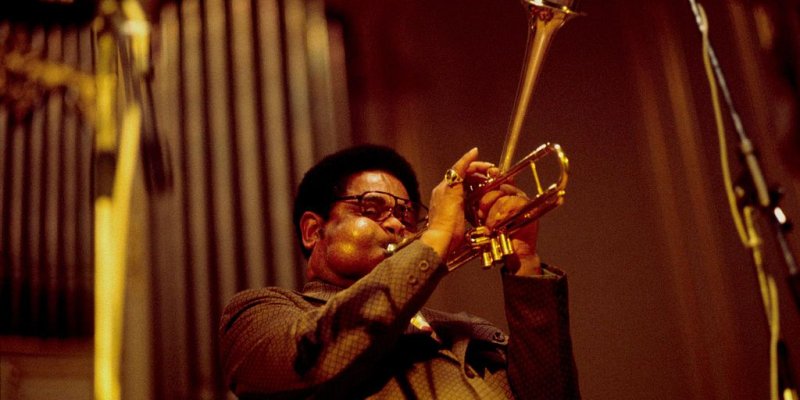
Dizzy Gillespie was known for his high-energy, innovative playing style and his contributions to the development of bebop music.
He is an iconic figure in the world of jazz music, known not only for his incredible trumpet skills but also for his distinctive physical feature – his puffed-up cheeks while playing the trumpet.
Many (including myself) have wondered about the story behind this unique aspect of his playing style, and I've uncovered some valuable info in a recent deep dive!
Let's go over three distinct factors that contributed to Dizzy Gillespie's puffed-up cheeks and why they became an integral part of his persona.
Dizzy Gillespie's Cheek Puffing was, in part, influenced by a medical condition known as laryngocele. A laryngocele is an abnormal enlargement of the laryngeal ventricle, a small sac in the throat.
While it primarily affects the voice, it can also impact airflow, which played a significant role in Gillespie's unique trumpet-playing style.
What isn't known is if his style of playing contributed to this condition, or if it was something that came along for another reason or even before he started playing.
What's much more common and likely to be caused by his playing and breathing techniques is a condition known as Glassblower's disease, which happens when someone forces air through a pipe regularly.
But it's actually really rare for a musician to develop since the condition is usually exacerbated by hot gas in the metal pipes and causes inflammation of the upper aerodigestive tract.
You may be wondering, is Glassblower's disease a regular risk for trumpet players? But according to the legend himself, his incorrect form is rare and isn't something he recommends that other people try to replicate.
"It's not the right way to play. People catch on to that pretty fast." He further clarified that he never intentionally devised this technique; instead, it simply emerged, much like Dizzy Gillespie himself.
What's taught as proper ways of breathing for trumpet learners is one of the following:
Diaphragmatic Breathing involves using the diaphragm muscle to draw in a deep breath instead of shallow chest breathing, where one expands their lower abdomen as they inhale, allowing for a greater intake of air.
Circular breathing is an advanced technique that involves inhaling through the nose while simultaneously using stored air from the cheeks to continue playing, allowing for uninterrupted, sustained notes.
Related Post: 8 Effective Breathing Exercises For Musicians
Gillespie's unconventional approach to playing the trumpet challenged traditional norms in the jazz world. His unique style set him apart, making his performances instantly recognizable and unforgettable.
His cheek puffing became a visual symbol of his innovative spirit and his unapologetic pursuit of originality in music.
Over time, Dizzy Gillespie's puffed-up cheeks inadvertently transformed into a central component of his image and brand.
Gillespie's unique playing style had such a big impact that it influenced trumpet design. Instrument makers began crafting custom instruments with larger bells and wider bores to accommodate the demands of his playing style.
Crucially, Dizzy Gillespie's puffed-up cheeks and the challenges posed by his laryngocele, or his strange form, did not hinder his extraordinary talent.
Despite any physical setbacks or criticism of his technique, Gillespie remained an exceptionally gifted musician.
His virtuosity on the trumpet, his innovative compositions, and his contributions to the development of bebop music far outweighed any limitations.
Gillespie's story serves as a powerful reminder that true talent can shine through, even when confronted with physical obstacles and unconventional methods.
Beyond his unique playing style, he was one of the first musicians to experiment with playing the trumpet in the upper register, hitting extremely high notes.
After his passing in 1993, numerous tributes and festivals have been dedicated to preserving and celebrating Dizzy Gillespie's legacy, ensuring that his contributions to jazz music are remembered and cherished.
Related Post: 21 Fun Facts About Jazz Music For All Ages

As a session singer, writer, and producer that has worked with over 300 clients to provide high-quality jingles, singles, and features, Yona spends her time creating and marketing new music and helpful resources for creators. Check out Yona’s latest releases on her Spotify, her Youtube and share if you like it!
If you are in need of singer, songwriter or song producer services, see what Yona Marie can offer you on her services page.